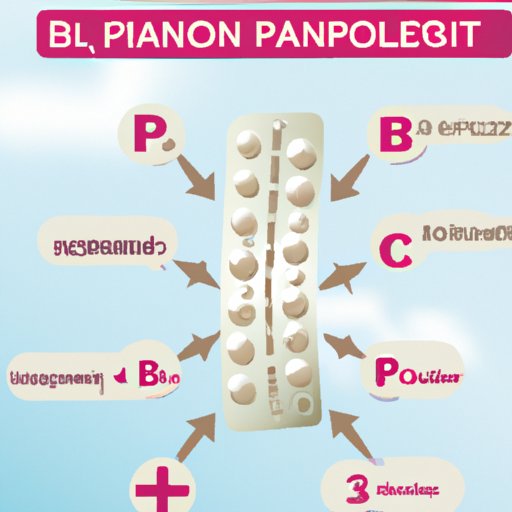Introduction
Plan B is a form of emergency contraception that can be used to prevent pregnancy up to three days after unprotected intercourse. It is sometimes referred to as the “morning-after pill” or “emergency contraceptive pill.” In this article, we will explore the science behind Plan B, discussing how it works and what potential side effects you may experience when taking it.
Exploring the Science Behind Plan B: How Does it Work?
Plan B is a type of emergency contraception that is taken orally in the form of a pill. It contains the synthetic hormones levonorgestrel, which is similar to the hormone progesterone that is naturally produced by the body. The hormones in Plan B work by altering the menstrual cycle and preventing ovulation, thus stopping fertilization and preventing pregnancy.
Understanding the Effects and Side Effects of Taking Plan B
When taken correctly, Plan B can be up to 95% effective at preventing pregnancy. However, it is important to note that Plan B does not protect against sexually transmitted infections (STIs). For those who are sexually active, it is important to use condoms to reduce the risk of STIs.
As with any medication, there are potential side effects associated with taking Plan B. The most common side effects include nausea, vomiting, breast tenderness, headaches, dizziness, and irregular bleeding. These side effects usually resolve within a few days. However, if the side effects persist or worsen, it is important to contact a healthcare provider.
It is also important to consider the potential risks and benefits of taking Plan B. While it is an effective way to prevent pregnancy, it should not be used as a regular form of birth control. It is only intended for occasional use in the event of unprotected intercourse. Additionally, Plan B does not offer any protection against STIs and should always be used in conjunction with condoms or other forms of protection.

A Closer Look at the Mechanism of Action of Plan B
The hormones in Plan B work by interfering with the normal menstrual cycle and preventing ovulation. When taken within 72 hours after unprotected intercourse, Plan B prevents the release of an egg from the ovary, thus preventing fertilization and subsequent pregnancy.
In addition to preventing ovulation, Plan B also alters the lining of the uterus, making it less hospitable to a fertilized egg. This further reduces the chances of pregnancy occurring.

Comparing Plan B to Other Forms of Emergency Contraception
Plan B is one of several methods of emergency contraception available. Others include copper intrauterine devices (IUDs), ulipristal acetate, and the two-dose regimen of levonorgestrel. Each method has its own set of pros and cons, including effectiveness, side effects, cost, and ease of use.
According to research, Plan B is the most effective form of emergency contraception, with a success rate of 95%. Copper IUDs are also very effective, with a success rate of 99%, but they require insertion by a healthcare provider. Ulipristal acetate and the two-dose regimen of levonorgestrel have success rates of 98% and 85%, respectively.
In terms of side effects, Plan B is generally well tolerated, with the most common side effects being nausea, vomiting, breast tenderness, headaches, dizziness, and irregular bleeding. Copper IUDs are also generally well tolerated, but may cause heavier periods, cramping, and spotting between periods. Ulipristal acetate and the two-dose regimen of levonorgestrel may cause similar side effects.
Conclusion
Plan B is a safe and effective form of emergency contraception that can be used up to three days after unprotected intercourse. It works by preventing ovulation and altering the lining of the uterus, making it less hospitable to a fertilized egg. Although Plan B is generally well tolerated, it is important to consider the potential side effects and risks before taking it.
When considering different forms of emergency contraception, it is important to weigh the risks and benefits of each option. Plan B is the most effective form of emergency contraception, with a success rate of 95%. However, copper IUDs, ulipristal acetate, and the two-dose regimen of levonorgestrel may also be viable alternatives depending on your individual needs and preferences.
If you think you may need to take Plan B, it is important to speak with your healthcare provider to discuss the potential risks and benefits. Your healthcare provider can help you determine which form of emergency contraception is right for you.
(Note: Is this article not meeting your expectations? Do you have knowledge or insights to share? Unlock new opportunities and expand your reach by joining our authors team. Click Registration to join us and share your expertise with our readers.)
